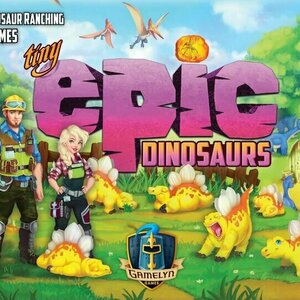
Tiny Epic Dinosaurs
Tabletop Game
In Tiny Epic Dinosaurs, breakthroughs in modern science have dinosaurs and humans existing side by...

English to Dutch
Travel and Education
App
GET AN IPHONE INTERPRETER WHILE YOU TRAVEL “Of the apps I tested in the low-price category, I...

English to Chinese (Mandarin)
Travel and Education
App
GET AN IPHONE INTERPRETER WHILE YOU TRAVEL “Of the apps I tested in the low-price category, I...

Roof Jumping: Stunt Driver Sim
Games
App
Become a pro stunt driver and take your skills to a completely new level! Choose from the most...

Dream11 Fantasy Sports
Sports and Games
App
Welcome to Dream11 - the Official Fantasy Cricket Partner of Hero CPL T20 2017! Play single-match...

Construction Site Truck Driver
Games
App
Start working in construction in this realistic and varied simulator! You may know about driving,...

Gas Station 2: Highway Service
Games
App
Buckle up and get ready for the trip of your life! When you cruise on an open highway, the safety...

Game of War - Fire Age
Games and Social Networking
App
Join the ULTIMATE battle for domination of the Kingdom in Game of War – Fire Age! PLAY FOR FREE in...

2XL ATV Offroad
Games and Entertainment
App
From the makers of “2XL Supercross” comes the hottest, action-packed racing game to hit the...

FlashScore
Sports
App
Stay in touch with everything you love about sport. With the FlashScore app, you are always just one...